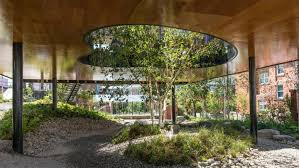Introduction
Healthcare architecture plays a vital role in shaping the experiences of patients, visitors, and medical professionals alike. Beyond aesthetics and structural stability, thoughtful design can influence patient outcomes, support clinical efficiency, and promote a sense of calm in high-stress environments. In recent decades, the focus on healthcare design has shifted from simply functional spaces to human-centred environments that consider mental, emotional, and physical wellbeing.
The Evolution of Healthcare Architecture
Historically, hospitals and healthcare centres were designed with an emphasis on capacity and sanitation. Functionality took precedence over comfort or aesthetic appeal, often resulting in cold, impersonal spaces. However, the past few decades have seen a significant transformation. Advances in medical knowledge have been paralleled by an understanding that the built environment can directly impact health and healing.
This evolution has given rise to a new approach in healthcare design—one that prioritises natural light, ventilation, access to nature, intuitive wayfinding, and acoustics. These elements are now recognised as crucial to reducing stress, speeding recovery, and improving the overall patient experience.
Patient-Centred Design Principles
Modern healthcare architecture increasingly revolves around patient-centred principles. This approach involves designing spaces that are safe, welcoming, and tailored to the needs of patients and their families. Key features include:
- Private Rooms: Privacy is linked with improved rest, better communication with care teams, and reduced risk of infection.
- Access to Nature: Views of greenery or outdoor spaces have been shown to reduce anxiety and pain perception.
- Wayfinding Systems: Clear signage and intuitive layouts ease navigation for patients and visitors, lowering stress and improving satisfaction.
- Noise Reduction: Limiting ambient noise supports rest and improves concentration for healthcare staff.
These principles are not only beneficial to patients but also to staff, who often work in high-pressure environments. A well-designed space can boost morale, reduce burnout, and support collaboration.
Technology and Sustainability in Healthcare Design
Technological integration is another hallmark of modern healthcare design. Smart systems that monitor air quality, temperature, and lighting can create a safer and more comfortable environment. Telemedicine facilities, digital check-in systems, and automated medication dispensers are becoming standard features in newly built hospitals.
In parallel, there is growing demand for sustainability in construction. Environmentally responsible design practices not only reduce operational costs but also promote public health. Features such as green roofs, energy-efficient HVAC systems, and sustainable building materials help reduce a facility’s carbon footprint.
The Role of the Healthcare Architect
A healthcare architect specialises in designing medical facilities that meet stringent regulatory standards while also enhancing the user experience. Their role goes far beyond structural design. They must understand clinical workflows, patient psychology, and the operational needs of healthcare providers.
In the later stages of a project, a healthcare architect works closely with hospital administrators, clinicians, and engineers to ensure that the facility functions smoothly in real-world scenarios. This includes everything from ensuring infection control protocols are integrated into the layout to accommodating future expansion and technological upgrades.
read more : Employers Should Know Job Offer Template in Today’s Hiring Landscape
Incorporating the principles of evidence-based design, these professionals aim to create environments that actively support healing. For example, a recent hospital project in the Midlands utilised soft colour palettes, maximised daylight exposure, and incorporated gardens throughout the site—contributing to shorter patient stays and higher staff satisfaction.
If you’re considering a medical facility build or renovation, partnering with an experienced healthcare architect is essential to ensuring your project meets clinical requirements and delivers a superior user experience.
Challenges and Future Outlook
Despite progress, healthcare architects still face numerous challenges. Budget constraints often limit design possibilities. Balancing the need for innovation with strict regulatory compliance can also be complex. Additionally, the unpredictable nature of healthcare—such as public health emergencies—demands flexibility in design that can accommodate sudden changes.
Looking ahead, the future of healthcare design lies in adaptability and resilience. Architects are exploring modular designs that allow for rapid reconfiguration, as well as materials that are easier to disinfect and maintain. The increased use of biophilic design, which integrates natural elements into the built environment, is also expected to become more mainstream.
A well-qualified healthcare architect is not only a designer but a strategic partner in shaping the future of medical care. By creating environments that are efficient, sustainable, and emotionally supportive, they contribute directly to better health outcomes and improved community wellbeing.

